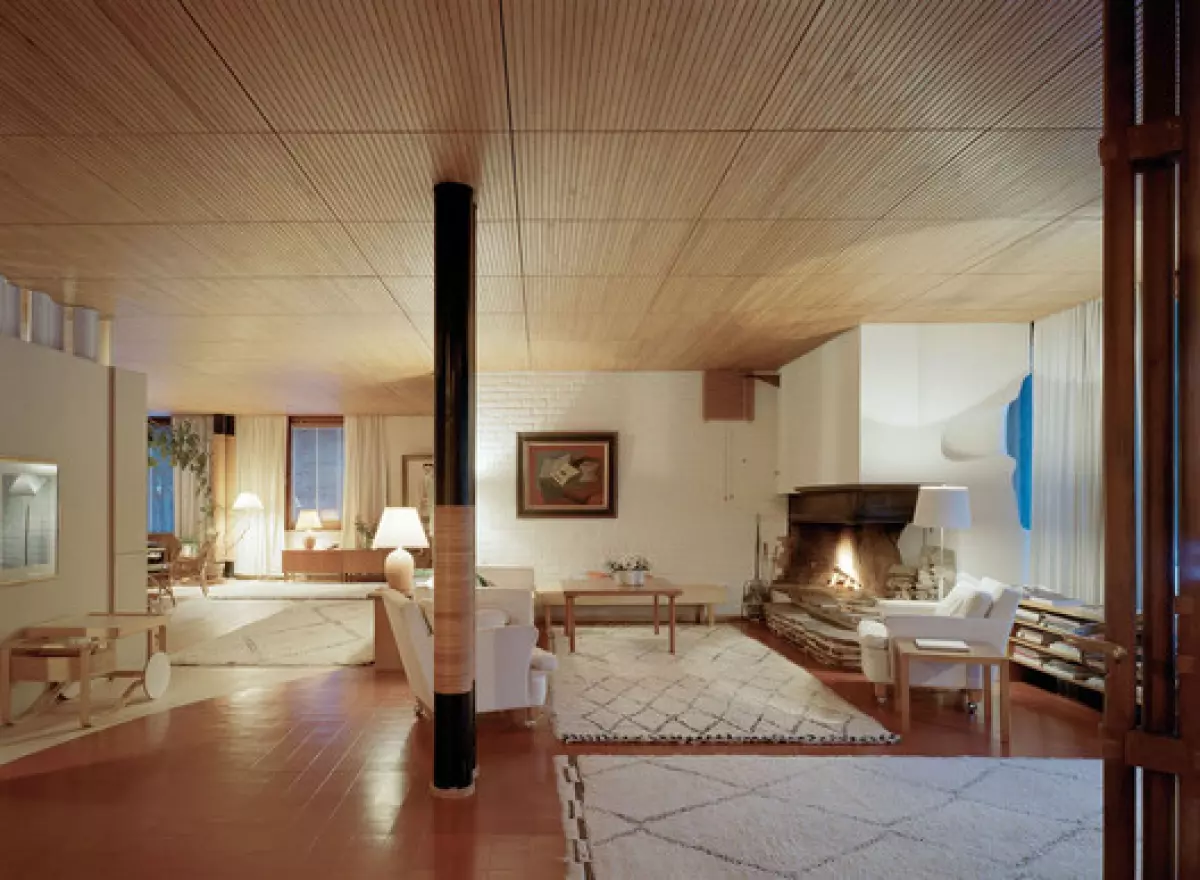 Villa Mairea / Alvar Aalto. Image: © Åke Eson Lindman
Villa Mairea / Alvar Aalto. Image: © Åke Eson Lindman
The 20th century was a transformative era in the world of design, particularly in architecture. It was a time of new ideas, material explorations, and the birth of the modern architecture movement. Architects in this period expressed their creativity and experimentation through various interior spaces that have now become timeless classics. These spaces continue to influence the architectural discourse and inspire architects around the world today.
Residential interiors, in particular, offer a glimpse into a new way of living and serve as a testament to the unique identity and style of the architects. These interiors are a reflection of their own furniture designs and innovative ideas in space organization.
Here are ten architectural classics from the 20th century, each with its distinct interior space that encapsulates the vision and creativity of the architect.
Koshino House / Tadao Ando
 Koshino House / Tadao Ando. Image: © Kazunori Fujimoto
Koshino House / Tadao Ando. Image: © Kazunori Fujimoto
The Koshino House by Tadao Ando features narrow vertical apertures on the façades, creating a play of natural light and shadow within the interiors. The use of these patterns serves as the only ornamentation in this mostly concrete and wood construction. The interior space is characterized by its minimalism and the incorporation of Japanese furnishings.
Villa Mairea / Alvar Aalto
 Villa Mairea / Alvar Aalto. Image: © Åke Eson Lindman
Villa Mairea / Alvar Aalto. Image: © Åke Eson Lindman
Villa Mairea, designed by Alvar Aalto, marks a transition from traditional to modern architectural designs. The interior of the house exhibits a progressive change in materials, from stone to tiles to timber boarding and rugs, as one moves from the entrance to the intimate spaces. Wood columns, resembling the verticality of the surrounding birch trees, further enhance the connection to nature.
Glass House / Lina Bo Bardi
 Glass House / Lina Bo Bardi. Image: © Nelson Kon
Glass House / Lina Bo Bardi. Image: © Nelson Kon
The Glass House, an iconic example of modern architecture in Brazil, presents a unique division of space. The living and dining areas are enclosed by glass openings, creating a central yard. The private program is situated on the upper floor, providing an opaque contrast to the transparent lower level.
Villa Planchart / Gio Ponti
 Villa Planchart / Gio Ponti. Image: © Miguel Braceli
Villa Planchart / Gio Ponti. Image: © Miguel Braceli
Villa Planchart showcases spaces organized by program through double-height ceilings. The design emphasizes visual lines across successive spaces, allowing residents to view the house from any angle. Gio Ponti's elaborate design scheme creates a unique and visually captivating interior.
Kaufmann House / Richard Neutra
 Kaufmann House / Richard Neutra. Image: © Julius Schulman
Kaufmann House / Richard Neutra. Image: © Julius Schulman
The Kaufmann House features a central living area surrounded by bedrooms connected through galleries and terraces. The seamless flow from interior to exterior creates a harmonious blend with the surrounding landscape. With its glass and steel construction, the house exudes a feeling of openness and lightness.
Villa Roche / Le Corbusier
 Villa Roche / Le Corbusier. Image: © Rory Hyde
Villa Roche / Le Corbusier. Image: © Rory Hyde
Inspired by Le Corbusier's visit to the Acropolis, Villa Roche embodies a hierarchical transition from space to space. Each room serves a particular purpose and extends towards the exterior. A large central area acts as the vestibule, collecting and dispersing light. The interior boasts a polychromatic color scheme, contrasting with the predominantly white façade and asymmetrical arrangement of the villa.
Eames House / Charles and Ray Eames
 Eames House / Charles and Ray Eames. Courtesy Image of Archilogic
Eames House / Charles and Ray Eames. Courtesy Image of Archilogic
The Eames House, designed as part of the Case Study House Program, consists of two boxes connected by a courtyard. It features double-height spaces and minimal interior divisions, emphasizing the integration between indoor and outdoor environments. The Eames' eclectic furnishings, textures, and diffused lighting create a captivating interior ambiance.
Douglas House / Richard Meier & Partners
 Douglas House / Richard Meier & Partners. Image: © Scott Frances/OTTO
Douglas House / Richard Meier & Partners. Image: © Scott Frances/OTTO
The Douglas House by Richard Meier & Partners is defined by an unconventional progression through space. It transitions from private areas to a large social area with expansive views of Lake Michigan. The use of white walls, geometric drawings, and large glass panels creates a striking contrast with the natural surroundings, allowing for the integration of indoor and outdoor spaces.
The Farnsworth House / Mies van der Rohe
 The Farnsworth House / Mies van der Rohe. Edoardo Bonaccorsi Picture via VisualHunt.com / CC BY-NC
The Farnsworth House / Mies van der Rohe. Edoardo Bonaccorsi Picture via VisualHunt.com / CC BY-NC
The Farnsworth House, despite the controversy surrounding its minimalist interior, remains a symbol of minimalist architecture. The glass box design seamlessly integrates with the surrounding environment. The interior space employs a single central core and modern furniture to create a simplistic and serene atmosphere.
Maison Louis Carré / Alvar Aalto
 Maison Louis Carré / Alvar Aalto. Image: © Samuel Ludwig
Maison Louis Carré / Alvar Aalto. Image: © Samuel Ludwig
The Maison Louis Carré organizes private and social spaces in layers. Aalto's signature integration of building, garden, furnishings, and interior design can be seen in this project. The furniture and lighting elements were specifically designed for this house, adding a personal touch to the overall design.
These ten interior spaces from the 20th century embody the spirit of experimentation and innovation that defined the architectural world during that time. They continue to inspire and influence architects today, showcasing the timelessness and enduring appeal of thoughtful design.

















